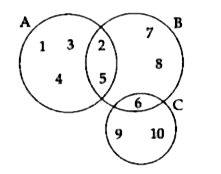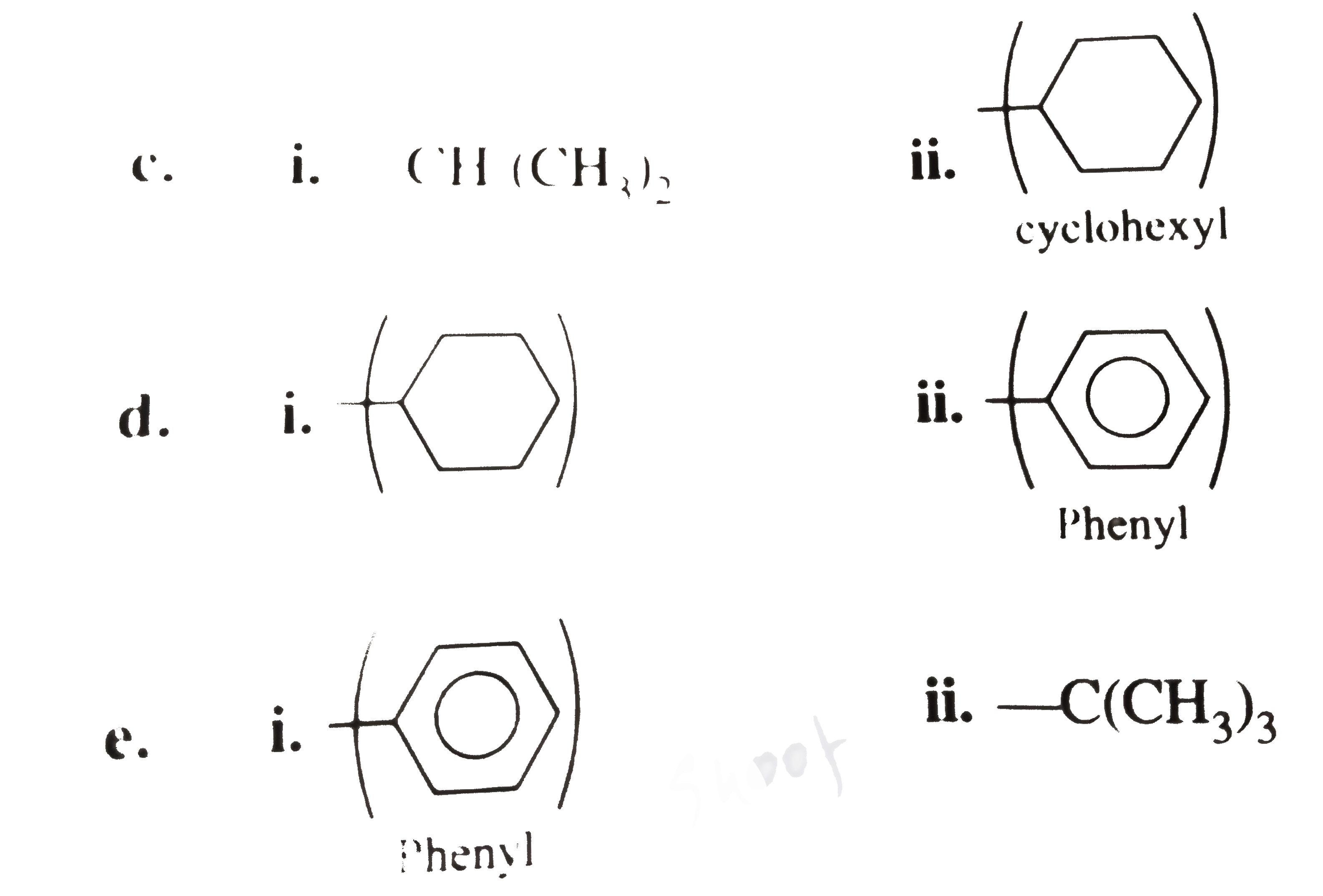Match A & B with i] & ii] - A:alkynes B: alkane with i]CnH(2n+2) ii]CnH2n−2
To solve the matching question between A (alkynes) and B (alkanes) with the given formulas, we can follow these steps:
1. Identify the General Formula for Alkanes:
- Alkanes are saturated hydrocarbons with the general formula CnH2n+2. This means for every 'n' carbon atoms, there are 2n+2 hydrogen atoms.
2. Identify the General Formula for Alkynes:
- Alkynes are unsaturated hydrocarbons that contain at least one triple bond. The general formula for alkynes is CnH2n−2. This indicates that for every 'n' carbon atoms, there are 2n−2 hydrogen atoms.
3. Match Alkyne with the Correct Formula:
- Since alkynes have the formula CnH2n−2, we can match A (alkynes) with ii) CnH2n−2.
4. Match Alkane with the Correct Formula:
- Alkanes, having the formula CnH2n+2, can be matched with i) CnH2n+2.
5. Final Matching:
- Therefore, we conclude that:
- A (alkynes) matches with ii) CnH2n−2
- B (alkanes) matches with i) CnH2n+2
Summary of Matches:
- A: Alkynes → ii) CnH2n−2
- B: Alkanes → i) CnH2n+2
- Alkanes are saturated hydrocarbons with the general formula CnH2n+2. This means for every 'n' carbon atoms, there are 2n+2 hydrogen atoms.
- Alkynes are unsaturated hydrocarbons that contain at least one triple bond. The general formula for alkynes is CnH2n−2. This indicates that for every 'n' carbon atoms, there are 2n−2 hydrogen atoms.
- Since alkynes have the formula CnH2n−2, we can match A (alkynes) with ii) CnH2n−2.
- Alkanes, having the formula CnH2n+2, can be matched with i) CnH2n+2.
- Therefore, we conclude that:
- A (alkynes) matches with ii) CnH2n−2
- B (alkanes) matches with i) CnH2n+2
- A: Alkynes → ii) CnH2n−2
- B: Alkanes → i) CnH2n+2
Similar Questions
Fill in the blanks with the correct words from the brackets:
Generally ionic compounds exist in [i]......... [solid / liquid / gas] state. Melting and boiling points of covalent compounds are generally [ii] ……..[low/high].The general formula for alkaneis [iii].............[CnH2n/CnH2n−2/CnH2n+2]. For alkynes the general formula is [iv] ……..[CnH2n/CnH2n−2/CnH2n+2]View SolutionGive the: i] IUPAC name of the homologous series ii] Characteristic bond type
in each case i.e. a] & b] relating to the homologous series of hydrocarbons-whose general formula is-
a] C2H2n−2 b] CnH2n+2View Solution
Knowledge Check
- Question 1 - Select One
Match the Column I with column II and mark the appropriate choice.
Column IColumn II(A)Coal gas(i)CO+H2(B)Synthesis gas(ii)CH4(C)Producer gas(iii)H2+CH4+CO(D)Natural gas(iv)CO+N2A(A) → (i), (B) → (ii), (C ) → (iii), (D) → (iv)B(A) → (iii), (B) → (i), (C ) → (iv), (D) → (ii)C(A) → (iv), (B) → (iii), (C ) → (ii), (D) → (i)D(A) → (i), (B) → (iii), (C ) → (i), (D) → (iv)
(a) Which of these have higher bond dissociation energy and why ? (i)N+2(ii)O+2
(b) What kinds of molecular forced exist between the species in the following pairs of particles and why ?
(i)HeandN2(ii)Cl2andNO−3(iii)NH3andCO.View SolutionEvaluate : (i)(a+6b)2 (ii)(3x−4y)2 (iii)(2a−b+c)2
View SolutionThe decrasing basic order of the following is:
i. Me2N−NMe2, ii. MeNH−NHMe
iii. H2N−NH2, iv. NH3View SolutionArrange the following in the increasing order of their basic strength : (i)(CH3)3N(ii)CH3NH2(iii)NH3
View SolutionFrom the adjoining Venn diagram , write the following sets : (i) A (ii) B (iii) C (iv) A∪B (v) A∩B (vi) B∪C (vii B∩C (viii) A∪C (ix)A∩C
Also verify that :
(i) n(A)+n(B)=(A∪B)+n(A∩B)
(ii) n(B)+n(C)=n(B∪C)+n(B∩C)
 View Solution
View SolutionThe correct order of value of pk_b the following amines is (i)C2H5NH2(ii)(C2H5)2NH(iii)(C2H5)3N
View SolutionArrange the following ligands in the decreasing order of priority.
a. i.−OH , ii. −COOH
iii −CH2OH , iv.CH(OH)CH3
b. i. −NH2 ii. −C≡N
iii. −NO2 iv. −CH2NH2
 View Solution
View Solution

